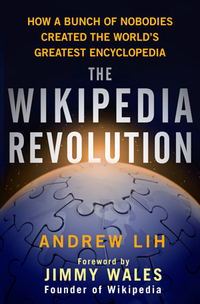(p. 108) Noted Yale law professor Yochai Benkler has a theory. In a widely circulated and famous essay on the Internet called “Coase’s Penguin,” he offered his thinking on why people participate in efforts such as Linux and other “free” projects. There was already a culture, before Wikipedia, of folks donating their time, effort, and skills to the collective good for no monetary gain or immediate compensation. Benkler observed this part of the hacker ethos and was curious to know what the common thread was.
He dubbed it “commons-based peer production.” It’s a fancy moniker for the phenomenon of people working together toward the same end–creating computer code or content that is free to be copied, distributed, used, and modified by others.
Benkler believes the Internet and the “free culture” movement have allowed individuals to connect and combine their efforts in ways unprecedented in history. The legal academic is not shy to combine scholarship outside his area of training by drawing on economics, sociology, and technology to form his theory.
According to Benkler, if monetary rewards and the creation of corporate firms have been the accepted driving force for human innovation and progress, there has to be something else driving volunteers in Linux, Wikipedia, and other “free” projects that have become so pervasive and monumental in the digital age.
He asserts the motivation comes from two main things other than money: the “socio-psychological” reward of interacting with others, and the “hedonic” personal gratification of the task.
Wikipedia’s magic occurs when these two things come together. One person’s personal affection and indulgence—mapmaking, grammar checking, baseball statistics, history of stamps—easily finds a home in Wikipedia’s amalgam of topics, where it also feeds into and inspires activities by others.
Source:
Lih, Andrew. The Wikipedia Revolution: How a Bunch of Nobodies Created the World’s Greatest Encyclopedia. New York: Hyperion, 2009.




